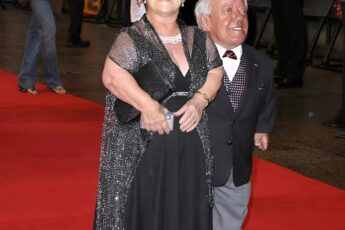From the way they looked at each other to the smiles they shared, it was clear this wasn’t just a friendly encounter. But beyond the photos and the tabloid captions, there is a quieter, more nuanced story worth paying attention to—one about two people who have lived long enough in the glare to understand what it can do to a heart, and who, perhaps for that reason, move around one another with a kind of careful curiosity.
When a public figure like Jennifer Lopez is seen with someone who once occupied the same kind of cultural perch—a late‑’90s heartthrob who spent years on magazine covers and red carpets—it’s easy for observers to reduce the moment to nostalgia or spectacle. And there is, undeniably, an element of that. The sight of two familiar faces reconnecting has a warm, almost cinematic quality that invites stories and memories. But the more interesting truth is how such encounters reveal the contours of time, career, and personal growth. Both parties are no longer simply icons frozen in the era that made them famous. They are people who have had to reinvent, reconcile, and sometimes mourn the versions of themselves the public once loved.

Fame is a peculiar kind of mirror. It reflects, distorts, and occasionally breaks, leaving pieces that people must pick up and decide how to rearrange. For someone who has been in the business for decades, like Lopez, there is a practiced way of navigating that mirror: embracing what serves you, discarding what doesn’t, and protecting the private self that still needs tending. To be seen with a former heartthrob is not just an item on a gossip column; it is an encounter between two people who have both learned how to survive the brightness and keep something like dignity intact. That shared history—with its triumphs, missteps, and reinventions—creates a foundation for understanding that younger admirers might not immediately grasp.
Consider the emotional economy of such a pairing. There’s a kind of shorthand that only comes from similar lived experience. When you’ve been photographed on a bad night and praised on a good one, when you’ve had to perform vulnerability for audiences while protecting your private life, you develop a language of empathy that is often unspoken. A look can mean, “I know what that feels like,” or “I’ll cover for you,” or simply, “I’m here.” These gestures, so tiny they might be ignored by most, are enormous in the lives of those who regularly contend with public exposure. They are the scaffolding of true companionship in an environment that can be both intoxicating and corrosive.
There is also an element of risk and hope in such a connection. For two people with long careers, the stakes feel different than in a youthful romance. They know what is at risk—their reputations, their families, the delicate privacy they’ve fought to preserve. But they also know what is to be gained: a partner who can be honest about the ways fame distorts perception, who can remind them of who they are when headlines try to define them. That steadiness is rare and, in a way, radical. It signals a move away from relationships that are primarily performative toward something that privileges mutual respect and shared reality.
The public reaction—ranging from excitement to skepticism—reveals as much about us as it does about them. Fans project longing and possibility onto famous relationships, hoping for narratives that echo their own dreams of happy endings or second chances. Critics, meanwhile, are quick to read the encounter as another public stunt or career maneuver. Both responses speak to the hunger people have for meaning in celebrity culture. Yet the individuals involved rarely fit neatly into these projections. They are messy, contradictory, and fully human


